Expedition Log: Caribbean Mangroves – Day 3
My favorite part of our mangrove education program is taking students into a mangrove forest. Their faces light up with excitement when we’re in the field. This experience is one of the most important parts of the program. Students get to see and touch the mangroves – some for the first time ever. For others the field trip imparts a deeper understanding of something they walk by every day. It’s one thing to show students a photo of a mangrove, but it’s an entirely different experience to take them out to explore this ecosystem themselves.
On the morning of our first field trip, I hop into the van with FRIENDS Education Specialist Cassandra Abraham and we head to Camp Abaco, a mangrove site FRIENDS has helped restore. The students we are working with in The Bahamas already know quite a bit about mangroves and I was confident they would be able to identify the different species of mangroves on their own. Mangrove educational standards are included in the science curriculum in The Bahamas. Usually, I give a guided tour through the mangroves, but this time we decided to have a mangrove scavenger hunt!
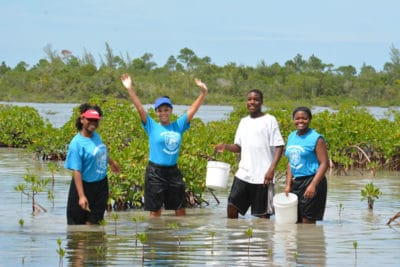
Students from Abaco Central High School on the mangrove scavenger hunt.
When all of the students got off the bus, Cassandra explained the rules of the Caribbean mangrove scavenger hunt to the students. “You need to collect a red, black, and white mangrove leaf, as well as three red mangrove propagules.”
I pipe in saying, “Make sure that you pick healthy and large propagules because you will be raising these seedlings in your classroom for the next eight months.”
I can feel the students energy rising as they lurch into action. Some students stay on land, but the majority head out into the water. Immediately, I hear shrieking and laughing. I don’t even have to look to know that the students are sinking in the mangrove mud. I know because I almost lost a shoe in the mud yesterday.
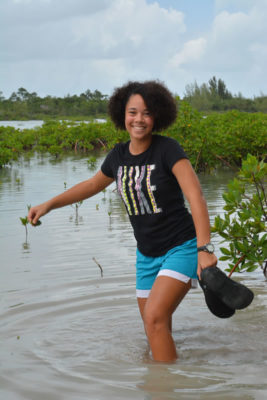
A student happily drudging through the mangroves.
They hold on to each other for balance and one by one they maneuver through the mud looking for their treasure. Some even find other creatures in the water.
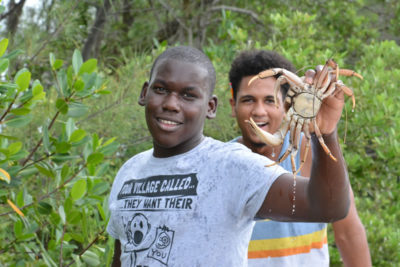
A student picks up a crab climbing in the roots of the mangroves.
After a few minutes, I’m bombarded with questions from students. They ask, “Are these mangrove propagules healthy?” and “Are these propagules large enough?”
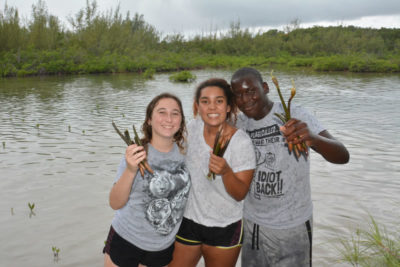
Students from Forest Heights Academy proudly show their red mangrove propagules.
Once we have given the students enough time, we reign them all in and we have a mini review session on the beach. We go over how to identify all of the mangrove species in Abaco.
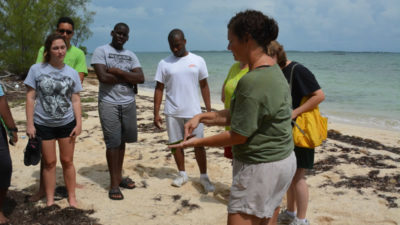
Here I am teaching students about the different types of mangrove propagules.
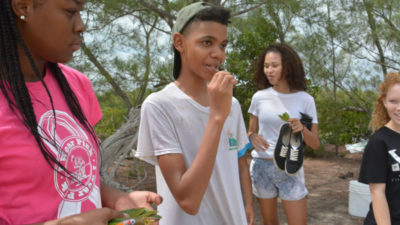
Students tasting mangrove leaves.
The students remember how to identify mangrove leaves with lyrics I learned in college:
- Red, red pointy head (red mangrove leaves are pointed)
- Black, black salty back (black mangroves get rid of salt by secreting it through their leaves.)
- White, white sweet delight (white mangrove leaves have two nodules that secrete sugar)
As they chanted the lyrics together, I challenged them to use them to create their own song. I’m hoping to hear them when I return to The Bahamas for the next phase of the Bahamas Awareness of Mangroves (B.A.M.) Program.
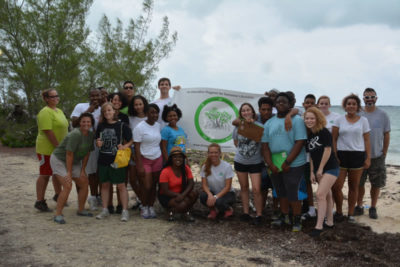
Students from Forest Heights Academy
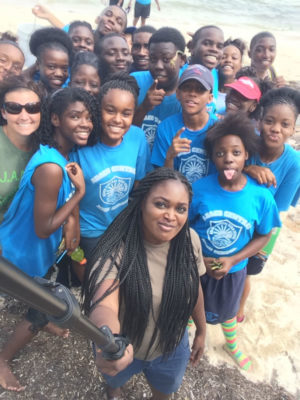
Students from Abaco Central High School
Photos: Amy Heemsoth
